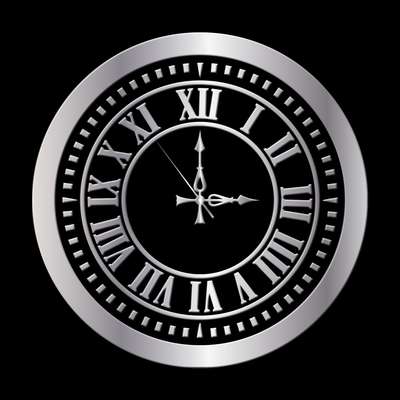Crazy Times: How Germany dealt with over 30 time zones before 1893!
- 08. April 2023 - General, Germany, Historical Events, Knowledge
Imagine living in 19th century Germany and having to adjust to a different time zone every time you travel within the country. This was reality until the introduction of a single time zone exactly 130 years ago. But how did it come about?
Back then, times were based on the position of the sun at the church towers, among other things. And so it came about that there were over 30 time zones in Germany, because the German Empire stretched over a total of 17 degrees of longitude and each degree of longitude meant a difference of 4 minutes. Thus, from the western to the eastern border of the German Empire, there was a difference of 67 minutes.
In concrete terms, this meant that if it was 12:00 a.m. in Düsseldorf, it was 12:07 in Karlsruhe, 12:08 in Frankfurt, 12:20 in Munich and 12:27 a.m. in Berlin. On a trip around Lake Constance alone, you had to change your watch six times.
This was not a big problem at first, because only a few people left their homes. And the journey on foot or by horse or carriage was not so fast that the travelers really noticed the time differences. It was only with the expansion of the railroad network starting in the 1840s that things began to get complicated.
German administration and traffic in a crowded time zone situation
At a time when Germany was dealing with over 30 different time zones, administration and traffic was a challenge. There was no consistent regulation and each place decided for itself which time zone it wanted to use. This led to confusion and problems in traffic, as trains and stagecoaches always had different times.
As early as 1848, at least in Prussia, agreement was reached on a consistent time for the railroad schedules, which was based on the time in Berlin. However, this only applied to Prussia.
Therefore, as early as 01 June 1891, the so-called Central European Railway Time was established for rail travel, oriented to the 15th degree of longitude, in which Austria-Hungary also participated.
The economy also suffered from the different time zones, as it was difficult to maintain and coordinate business relations. In addition, there were political and social conflicts, as the different regions often could not agree on which time was the correct one.
The road to a single time zone in 1893
Every 17.7 kilometers or so, the time changed by 1 minute more or less, depending on whether you were traveling east or west. This was the reality until a single time zone was established in 1893. But how did that happen? The idea of a single time zone was discussed as early as the 1870s, but was not put into practice until 1891 by the German Naval Observatory in Hamburg.
As early as 1884, at the Meridian Conference in Washington, DC, 25 countries agreed that there should be one world time with 24 time zones, each one hour apart. An envoy from Germany also attended the conference and voted for the introduction of these time zones.
However, it took another 9 years before a single time zone for Germany was legislated. The reason was pure vanity: The German Emperor did not want the zero meridian to be in Greenwich, England, instead of Berlin!
Finally, the decision was made: it was decided that Central European Time (CET) would be the standard time for Germany. On 01 April 1893, it was officially introduced by the German Emperor.
The wording of Imperial Law Gazette No. 7 was as follows:
"We Wilhelm, by the grace of God German Emperor, King of Prussia, decree in the name of the Reich: The legal time in Germany shall be the mean solar time of the 15th meridian east of Greenwich. This law shall enter into force at the time when, according to the established time determination, 01 April 1893, begins".
The introduction was not without opposition, however. Many people were skeptical of the idea of a single time zone and feared that confusion would result. But in the end, CET proved successful and was eventually adopted by other countries. Today, it is hard to imagine what it would be like to live in a country with more than 30 different time zones.
The introduction of CET was therefore an important step towards international coordination and communication, as it made it possible to coordinate appointments and schedules in different countries. Today, CET is the standard time in most European countries and is also used to calculate time zones in other parts of the world.
Obviously, there was no perfect solution to deal with different time measurements and their standardization in the past. The introduction of Central European Time (CET) was a compromise based on political and economic considerations. To this day, however, even this arrangement triggers discussion and debate. Some countries additionally work with summer and winter time, others do not. At least in Europe, it is being considered to agree on a time for the whole year again, which, however, raises new political problems and has therefore not been implemented so far. And there are even voices arguing that we should say goodbye to the idea of time zones altogether. So what seems certain above all is that timekeeping is an important aspect of our lives that will probably continue to evolve...
If you'd like to learn more about times, dates, and calendars in genealogy, don't miss Andrea Bentschneider's presentation on "Different Calendars in German Genealogy" at the 4th annual "24-Hour Genealogy Webinar Marathon" on 14 April 2023.
Register here for free:  https://familytreewebinars.com/webinar/different-calendars-in-german-genealogy/
https://familytreewebinars.com/webinar/different-calendars-in-german-genealogy/


0 comments